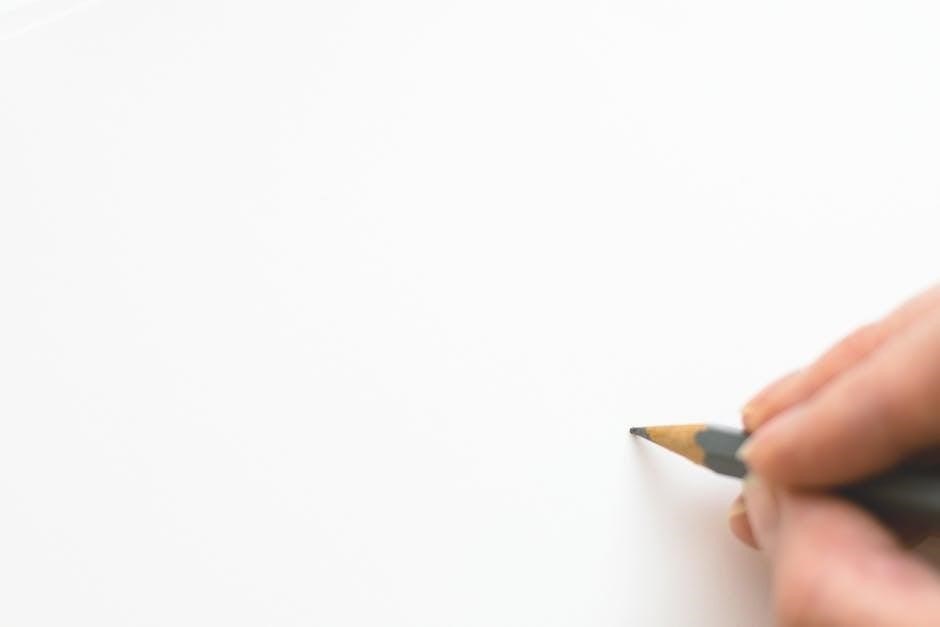Manual drip coffee brewing offers precise control over flavor and customization‚ making it a popular choice among coffee enthusiasts․ Using a manual process‚ coffee lovers can extract the perfect cup by carefully managing factors like grind size‚ water temperature‚ and pouring technique․ This method emphasizes quality and craftsmanship‚ allowing for a deeper connection to the brewing process․ With tools like the V60 or Chemex‚ manual drip brewing has become a staple in both home and specialty coffee settings‚ offering a unique way to savor high-quality coffee beans․
What is Manual Drip Coffee?
Manual drip coffee involves brewing coffee by manually pouring hot water over ground coffee beans in a filter․ It is also known as pour-over coffee․ This method allows for precise control over brewing parameters like water temperature‚ coffee-to-water ratio‚ and extraction time․ Popular devices like the Hario V60 and Chemex are used for this process․ Unlike automatic drip coffee makers‚ manual drip coffee requires hands-on involvement‚ enabling a more personalized and nuanced brewing experience․ The process ensures better extraction of flavors and oils from the coffee beans‚ resulting in a more aromatic and flavorful cup․ It is favored by coffee enthusiasts for its adaptability and ability to bring out the unique characteristics of high-quality coffee beans․
Historical Background of Manual Drip Brewing
Manual drip brewing has its roots in the early 20th century when Melitta Bentz invented the first pour-over coffee maker․ This method gained popularity in the mid-20th century with the introduction of devices like the Hario V60 and Chemex․ These tools emphasized precision and control‚ making manual drip brewing a staple in coffee culture․ Over time‚ manual drip brewing evolved‚ with innovations in materials and design‚ such as glass drippers and reusable filters․ Today‚ it is celebrated worldwide for its simplicity and ability to highlight the unique qualities of high-quality coffee beans‚ making it a cornerstone of specialty coffee․
Key Benefits of Manual Drip Coffee
Manual drip coffee offers unparalleled control over brewing parameters‚ allowing for a customized flavor experience․ It enables precise adjustments to coffee-to-water ratio‚ grind size‚ and water temperature‚ ensuring optimal extraction․ This method highlights the unique qualities of high-quality coffee beans‚ delivering a cleaner and more nuanced taste․ Manual drip brewing is also cost-effective and eco-friendly‚ as it eliminates the need for electricity and disposable filters․ Additionally‚ the process is portable and versatile‚ making it ideal for both home use and travel․ The tactile nature of manual brewing also fosters a deeper appreciation and connection to the art of coffee making․
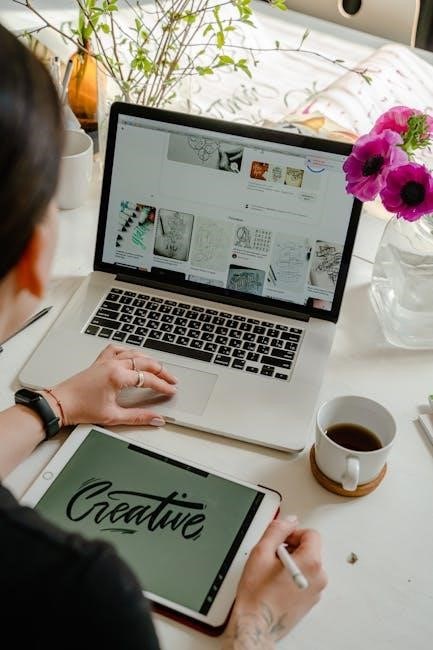
Popular Types of Manual Drip Coffee Makers
Popular manual drip coffee makers include Hario V60‚ Chemex‚ Aeropress‚ and pour-over brewers‚ each known for their unique designs and ease of use․
Hario V60
The Hario V60 is a popular manual drip coffee maker known for its simplicity and versatility․ Its cone-shaped design with a single hole allows for precise control over water flow‚ ensuring clean extraction․ Made from high-quality glass‚ the V60 is durable and easy to clean․ It is favored by coffee enthusiasts for its ability to bring out the full flavor profile of coffee beans․ The V60 is also portable and easy to use‚ making it a great choice for both beginners and experienced brewers․ Its transparent design lets users observe the brewing process‚ enhancing the overall coffee-making experience․ It is widely regarded as a staple in manual drip brewing․
Chemex
The Chemex is a manual drip coffee maker renowned for its distinctive hourglass shape and thick glass construction․ It uses a specialized paper filter to ensure a clean and balanced extraction․ The Chemex’s design allows for even water flow‚ resulting in a smooth and flavorful cup․ Its thick glass helps retain heat during brewing‚ while the non-porous material prevents unwanted flavors․ Popular among coffee enthusiasts‚ the Chemex offers a unique brewing experience that combines simplicity with precision․ It is easy to clean and durable‚ making it a long-lasting addition to any coffee setup․ Its iconic design has also made it a favorite among design-conscious coffee lovers․
Aeropress
The Aeropress is a versatile manual drip coffee maker that combines elements of French press and pour-over methods․ Known for its smooth‚ full-bodied coffee‚ it uses air pressure to extract flavors from the grounds․ Made of durable‚ BPA-free plastic‚ it’s lightweight and portable‚ making it ideal for travel․ The Aeropress allows users to experiment with various brewing techniques‚ from espresso-style shots to American-style coffee․ Its design ensures minimal bitterness and a clean finish․ Cleaning is straightforward‚ as the chamber is easily rinsed․ With its compact size and ease of use‚ the Aeropress has become a favorite among coffee enthusiasts seeking a flexible and high-quality brewing experience․
Manual Pour-Over Brewers
Manual pour-over brewers are a classic choice for coffee enthusiasts‚ offering a simple yet precise brewing method․ These devices typically consist of a cone-shaped dripper and a paper or metal filter․ Users pour hot water manually over ground coffee beans‚ allowing for full control over the brewing process․ The pour-over method emphasizes the importance of coffee-to-water ratio‚ grind size‚ and water temperature․ It’s praised for producing clean‚ flavorful coffee with a bright acidity․ Popular brands include Hario‚ Chemex‚ and others‚ each with slight design variations․ The pour-over process is meditative and customizable‚ making it a favorite among those who enjoy a hands-on approach to their coffee․ Its simplicity and portability have solidified its place in coffee culture․
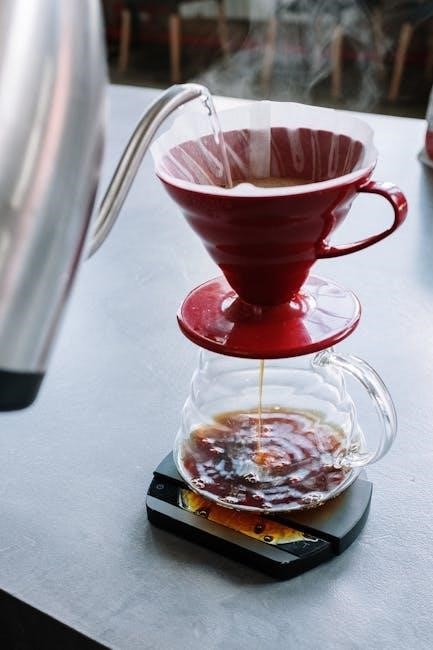
The Manual Drip Coffee Brewing Process
Manual drip brewing involves a deliberate‚ step-by-step approach to extract flavors from coffee beans․ It requires precise preparation‚ including measuring‚ grinding‚ and pouring water‚ to achieve optimal results․
Step 1: Choosing the Right Coffee Beans
Choosing the right coffee beans is the foundation of a great manual drip brew․ Opt for high-quality‚ freshly roasted beans‚ as they deliver the best flavor․ Consider the bean’s origin‚ processing method‚ and roast level‚ as these factors significantly impact taste․ Lighter roasts highlight acidity and nuanced flavors‚ while darker roasts offer bold‚ rich notes․ For optimal results‚ purchase beans from reputable roasters and use them within 14 days of roasting․ Store beans in an airtight container to preserve freshness․ Experiment with single-origin or blended beans to find your preferred profile․ Fresh‚ quality beans ensure a vibrant and satisfying brew․
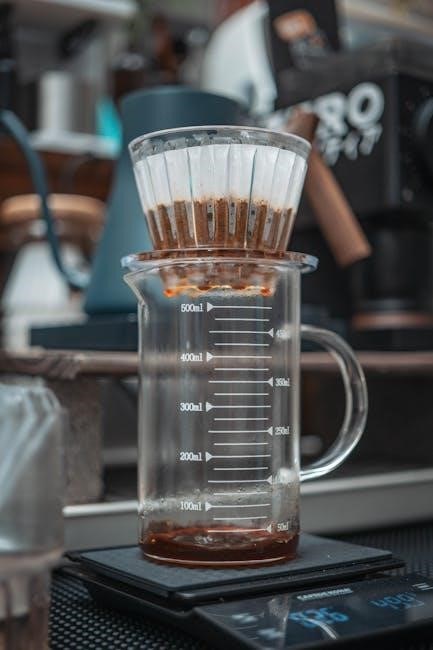
Step 2: Grinding the Coffee Beans
Grinding the coffee beans is a crucial step in manual drip brewing‚ as it releases the flavors and aromas trapped inside․ The grind size should be medium-coarse‚ resembling kosher salt‚ to ensure proper extraction․ Use a burr grinder‚ as it produces a consistent grind without generating heat‚ which can damage the beans․ Blade grinders are less ideal‚ as they create uneven particles․ Adjust the grind size based on your coffee maker and personal preference․ For optimal flavor‚ grind the beans immediately before brewing to preserve their freshness and volatile compounds․ A consistent grind ensures even extraction‚ leading to a balanced and flavorful cup of coffee․
Step 3: Heating the Water
Heating water is a critical step in manual drip brewing‚ as temperature plays a significant role in extraction․ Water should be heated to between 195°F and 205°F‚ the ideal range for coffee brewing․ Use a kettle‚ preferably one with temperature control‚ to achieve precision․ Avoid using boiling water‚ as it can burn the coffee grounds․ Fresh‚ filtered water is essential to prevent impurities and odors from affecting the taste․ Once heated‚ allow the water to sit for a moment before pouring to ensure it reaches the optimal temperature․ Properly heated water ensures even extraction and brings out the full flavor of the coffee beans․
Step 4: Preparing the Filter
Preparing the filter is a straightforward yet essential step in manual drip brewing․ Start by rinsing the filter with hot water to remove any paper taste‚ ensuring it doesn’t affect the coffee’s flavor․ Place the rinsed filter into the coffee maker‚ making sure it’s securely positioned to prevent any leaks or uneven extraction․ For paper filters‚ this step also helps preheat the brewer․ If using a metal or cloth filter‚ rinse it thoroughly and allow it to dry slightly before placing it in the maker․ A well-prepared filter ensures a clean and balanced extraction‚ setting the stage for a smooth brewing process․
Step 5: Pouring the Water
Pouring the water is where manual drip brewing requires finesse․ Begin by gently pouring a small amount of water over the coffee grounds to saturate them evenly—this is known as the “bloom” phase․ Allow the coffee to bloom for 30-45 seconds to release trapped gases․ Next‚ pour the remaining water in a circular motion‚ starting from the center and moving outward․ Ensure the water flows evenly and doesn’t overflow or pool․ The total brewing time should be around 2-3 minutes‚ depending on the desired strength․ Pouring technique directly impacts extraction‚ so consistency and attention are key for a balanced flavor․ Adjust as needed for optimal results․
Step 6: Serving the Coffee
Once the brewing process is complete‚ carefully pour the freshly brewed coffee into your cup․ For optimal flavor‚ serve immediately to ensure the coffee is at its best temperature and aroma․ Consider pre-warming your cup with hot water beforehand to maintain warmth․ You can customize your coffee to your taste by adding milk‚ sugar‚ or other preferred toppings․ Manual drip coffee is best enjoyed fresh‚ as it allows you to fully appreciate the nuanced flavors achieved through the manual process․ Experiment with different serving styles‚ such as black‚ iced‚ or with whipped cream‚ to enhance your coffee experience and savor the fruits of your labor․
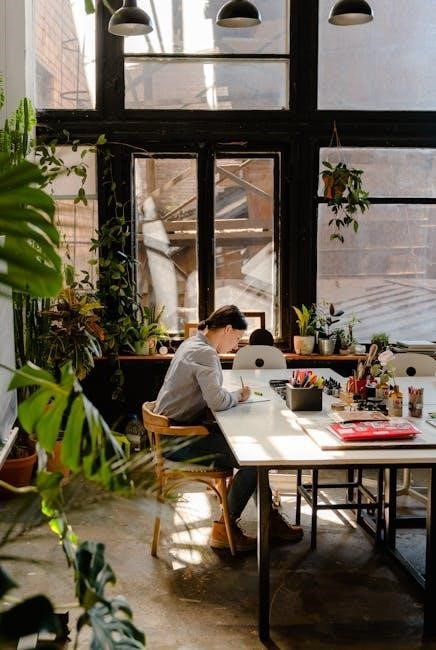
Key Factors Affecting Manual Drip Coffee Flavor
Coffee-to-water ratio‚ grind size‚ water temperature‚ and brewing time are critical factors influencing the flavor profile in manual drip coffee․
Coffee-to-Water Ratio
The coffee-to-water ratio is a fundamental factor in manual drip brewing‚ directly impacting the flavor profile․ A standard ratio is 1:16 to 1:17 (one gram of coffee for 16-17 grams of water)․ Adjusting this ratio allows for personal preference‚ with a higher ratio yielding a stronger brew and a lower ratio resulting in a weaker one․ Too much coffee can lead to over-extraction and bitterness‚ while too little may cause under-extraction and a sour taste․ Achieving the ideal balance ensures a harmonious extraction of flavors‚ making it essential to measure both components accurately for optimal results․
Grind Size and Consistency
Grind size and consistency are crucial in manual drip brewing‚ as they influence extraction efficiency and flavor balance․ A medium to medium-coarse grind is typically recommended‚ but this may vary depending on the specific brewing device․ For instance‚ a Hario V60 often works best with a medium grind‚ while a Chemex might require a slightly coarser grind due to its thicker filter․ Inconsistent grinds can lead to channeling‚ causing under-extraction and an unbalanced taste․ Using a burr grinder ensures uniform particle size‚ which is essential for even extraction․ Adjusting the grind size based on the brewer and personal preference allows for a tailored flavor profile‚ enhancing the overall coffee experience․
Water Temperature
Water temperature plays a significant role in manual drip brewing‚ as it directly impacts extraction and flavor․ The ideal temperature for brewing coffee is between 195°F and 205°F‚ just below boiling point․ Water that’s too hot can burn the coffee‚ leading to a bitter taste‚ while water that’s too cool may result in under-extraction and a weak flavor․ Using a thermometer is recommended to ensure precision․ Preheating the coffee maker and cup helps maintain consistent temperature during brewing․ Allow boiling water to cool for about 30 seconds before pouring to achieve the perfect temperature for optimal extraction and a balanced flavor profile;
Brewing Time
Brewing time is a critical factor in manual drip coffee‚ directly influencing the flavor and strength of the coffee․ The ideal brewing time typically ranges between 2 to 4 minutes‚ depending on the method and equipment used․ A shorter brewing time can result in under-extraction‚ leading to a weaker or sour taste‚ while a longer time may cause over-extraction‚ making the coffee bitter․ Factors such as coffee-to-water ratio‚ grind size‚ and pour rate affect the brewing duration․ Adjusting these elements allows for precise control over the brewing time‚ ensuring a balanced extraction․ Monitoring the process helps achieve the perfect brew‚ enhancing the overall coffee experience with each cup․
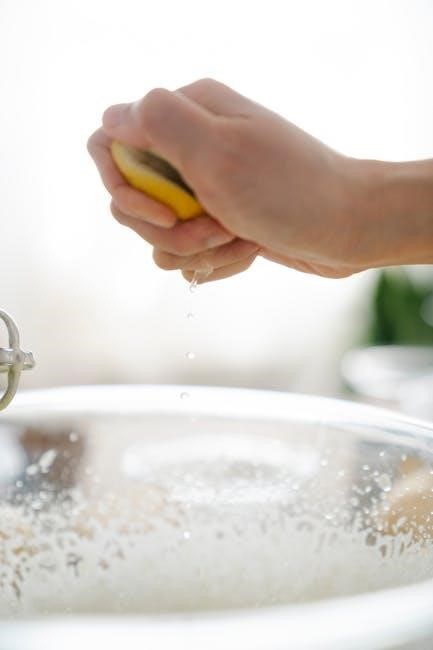
Maintenance and Care for Manual Drip Equipment
Regularly clean equipment with fresh water to prevent residue buildup․ Dry thoroughly after use to avoid rust or mold․ Store in a cool‚ dry place to maintain longevity and performance․
Cleaning the Coffee Maker
Regular cleaning is essential to maintain the quality and flavor of your manual drip coffee․ Rinse the equipment daily with fresh water to remove residual coffee oils․ For deeper cleaning‚ mix equal parts water and white vinegar‚ soak for 10-15 minutes‚ then rinse thoroughly․ Avoid harsh chemicals‚ as they can leave unwanted flavors․ Use a soft cloth to wipe surfaces and prevent scratches․ Descale periodically if using hard water to remove mineral buildup․ Dry the equipment after cleaning to prevent mold or bacteria growth․ Proper maintenance ensures optimal performance and longevity of your manual drip coffee maker․
Storing the Equipment
Proper storage of your manual drip coffee maker is crucial to maintain its condition and functionality․ After cleaning‚ ensure all parts are completely dry to prevent moisture buildup or mold․ Store the equipment in a cool‚ dry place‚ away from direct sunlight․ For glass or ceramic brewers‚ avoid stacking heavy items on top to prevent damage․ Keep filters in a separate‚ airtight container to preserve freshness․ If storing for an extended period‚ disassemble the brewer and store components individually to prevent bacterial growth․ Use a soft cloth to protect delicate surfaces during storage․ Always follow the manufacturer’s storage recommendations for specific models․
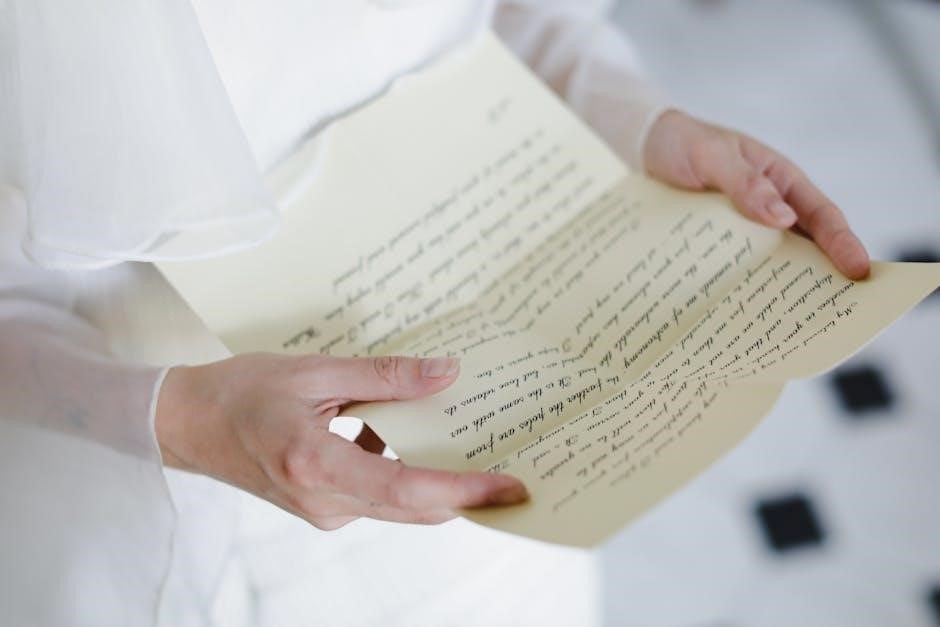
Comparing Manual Drip to Automatic Drip Coffee
Manual drip offers precise control over brewing parameters‚ while automatic drip provides convenience and speed․ Manual drip suits coffee enthusiasts seeking customization‚ while automatic drip is ideal for everyday simplicity and efficiency․
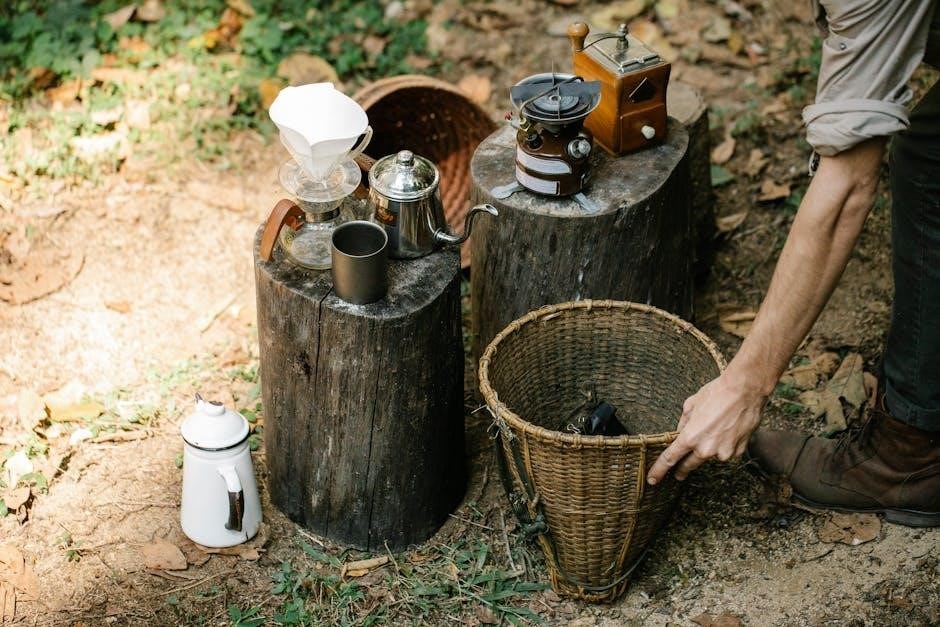
Pros and Cons of Manual Drip
Manual drip coffee brewing offers exceptional control over flavor parameters‚ allowing for customized extraction․ It encourages a hands-on‚ engaging process that many find enjoyable․ The equipment is often durable and easy to clean‚ making it a sustainable choice․ However‚ manual drip requires time‚ effort‚ and practice to master‚ which can be a drawback for those seeking convenience․ It also demands a good understanding of variables like grind size and water temperature․ Additionally‚ manual drip brewers can be more expensive than automatic ones‚ and the process may not be as quick for large groups․ Despite this‚ it remains a favorite among coffee purists for its ability to deliver high-quality‚ tailored brews․
Pros and Cons of Automatic Drip
Automatic drip coffee makers are known for their convenience and speed‚ making them ideal for busy households․ They can brew multiple cups quickly and often feature programmable timers for added ease․ However‚ they lack the customization and control offered by manual drip methods‚ which can result in less precise flavor extraction․ Automatic brewers also rely on filters that may absorb some coffee oils‚ potentially affecting taste․ Maintenance can be more involved due to the machine’s complexity‚ and cleaning requires descaling to prevent mineral buildup․ While they are practical for everyday use‚ they may not satisfy those seeking a more hands-on‚ nuanced coffee experience․
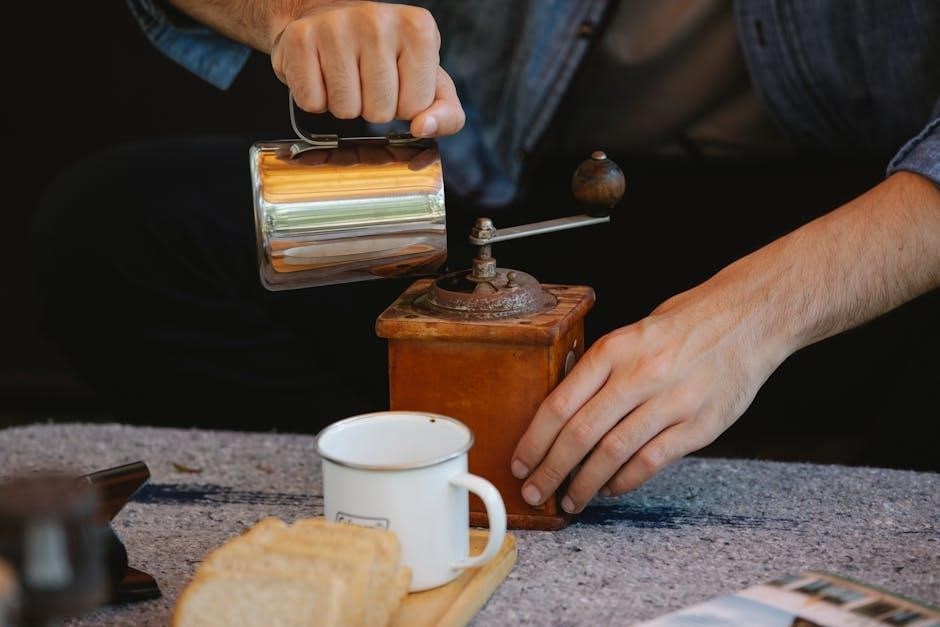
Troubleshooting Common Issues in Manual Drip Brewing
Common issues include uneven extraction‚ channeling‚ or over-extraction․ Adjusting grind size‚ water distribution‚ and coffee-to-water ratios can resolve these problems for a balanced brew․
Over-Extraction
Over-extraction occurs when too much coffee is extracted‚ resulting in a bitter‚ unbalanced flavor․ It happens when the coffee grounds are in contact with water for too long or the grind is too fine․ To fix this‚ reduce the steeping time‚ use a coarser grind‚ or adjust the coffee-to-water ratio․ Ensuring even water distribution during pouring can also prevent over-extraction․ Monitoring brewing time and adjusting grind size are key solutions for achieving a smoother‚ more flavorful cup of coffee․ Proper technique and attention to detail are essential to avoid this common issue in manual drip brewing․
Under-Extraction
Under-extraction occurs when too little coffee is extracted‚ leading to a weak‚ sour‚ or tea-like flavor․ This happens when the coffee grounds aren’t in contact with water long enough or the grind is too coarse․ To address this‚ extend the steeping time‚ use a finer grind‚ or increase the coffee-to-water ratio․ Ensuring even saturation of the grounds during pouring can also help․ Adjusting the grind size and brewing time are effective ways to achieve a more balanced extraction․ Proper technique and attention to the coffee’s bloom phase can prevent under-extraction‚ ensuring a richer‚ more flavorful cup of manually dripped coffee․
Channeling
Channeling occurs when water flows unevenly through the coffee grounds‚ creating pathways that bypass some areas․ This leads to under-extraction in certain spots and over-extraction in others‚ resulting in an imbalanced flavor․ Channeling is often caused by improper pouring technique‚ an uneven coffee bed‚ or a grind size that’s too coarse․ To prevent it‚ ensure the coffee grounds are evenly distributed in the filter and pour water in a steady‚ circular motion․ Using a consistent grind size and pre-wetting the grounds (blooming) can also help minimize channeling․ Addressing this issue ensures a more uniform extraction and a smoother‚ more flavorful cup of manually dripped coffee․
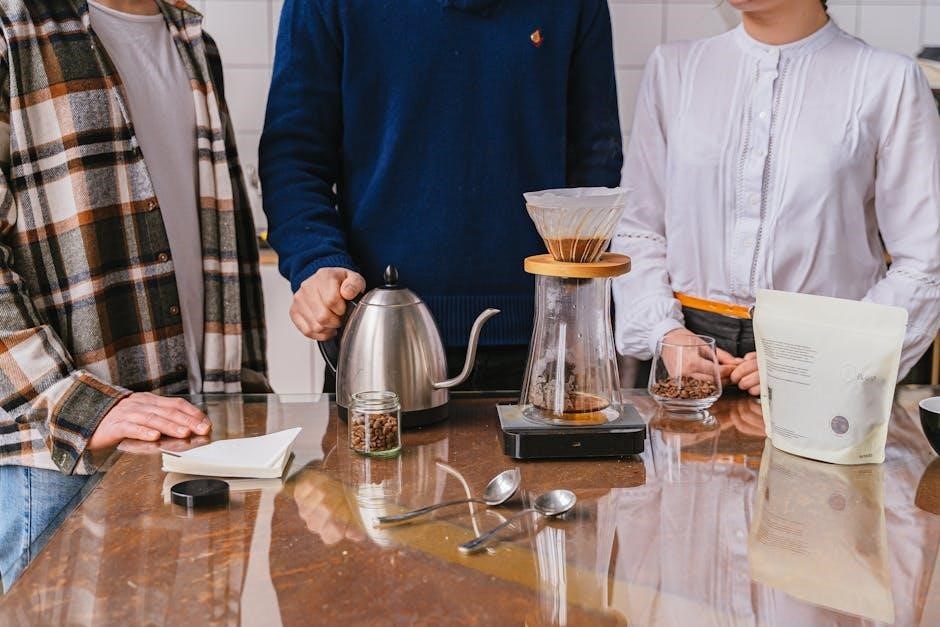
Advanced Tips for Perfecting Manual Drip Coffee
Mastering manual drip coffee requires precision and practice․ Invest in quality beans‚ experiment with ratios‚ and refine your pouring technique for optimal flavor balance and consistency․
Using High-Quality Coffee Beans
Using high-quality coffee beans is essential for achieving exceptional flavor in manual drip brewing․ Freshly roasted and freshly ground beans ensure optimal aroma and taste․ Opt for beans roasted within the last week and store them in an airtight container to preserve freshness․ Lighter roasts often highlight nuanced flavors‚ while darker roasts provide bold‚ rich notes․ Experiment with single-origin beans to experience distinct regional profiles․ Avoid pre-ground coffee‚ as it loses flavor quickly․ Invest in a burr grinder to grind beans just before brewing‚ ensuring maximum flavor extraction․ High-quality beans form the foundation of a perfect manual drip coffee‚ making it worth the investment․
Adjusting Grind Size for Optimal Flavor
Adjusting the grind size is crucial for achieving optimal flavor in manual drip coffee․ A grind that’s too fine can lead to over-extraction‚ resulting in bitter notes‚ while a grind that’s too coarse may cause under-extraction‚ yielding a weak or sour taste․ The ideal grind size depends on the brewing method and equipment․ For most manual drip brewers‚ a medium-coarse grind is recommended․ Experiment with small adjustments to find the perfect balance for your setup․ Consistency is key—use a burr grinder to ensure uniform particle size․ Fine-tuning the grind size enhances extraction‚ delivering a balanced and flavorful cup of coffee every time․
Monitoring Water Temperature
Monitoring water temperature is essential for achieving optimal flavor in manual drip coffee․ The ideal temperature for brewing is between 195°F and 205°F‚ as water that’s too hot can burn the coffee‚ leading to bitterness‚ while water that’s too cool may result in under-extraction and a flat taste․ Use a thermometer to ensure accuracy‚ especially when heating water manually․ Consistency is key‚ as fluctuating temperatures can disrupt extraction balance․ Aim for a steady temperature throughout the brewing process to bring out the full potential of your coffee beans․ This attention to detail enhances the overall quality and flavor profile of your manual drip coffee․
Mastering the Pouring Technique
Mastering the pouring technique is crucial for manual drip coffee brewing․ Start with a gentle pour to saturate all grounds evenly‚ allowing the coffee to “bloom” and release trapped gases․ This initial pour should be about 40-50ml for a standard serving․ After the bloom‚ pour in concentric circles‚ starting from the center and moving outward‚ ensuring all grounds are evenly saturated․ Avoid pouring too quickly‚ as this can lead to under-extraction‚ or too slowly‚ causing over-extraction․ Practice a steady‚ controlled flow to achieve balanced extraction․ A well-executed pour enhances flavor complexity and ensures a smooth‚ enjoyable cup of coffee every time․
Manual drip coffee brewing offers unparalleled control over flavor and quality‚ making it a rewarding method for coffee enthusiasts․ Experimentation and practice lead to perfect brews․
Final Thoughts on Manual Drip Coffee Brewing
Manual drip coffee brewing is a timeless craft that combines artistry and precision‚ offering a deeply satisfying coffee experience․ By mastering the process‚ enthusiasts can tailor flavors to their preferences‚ experimenting with beans‚ grind sizes‚ and techniques․ The manual method fosters a connection to the coffee-making tradition‚ making each cup a personal achievement․ While it requires patience and practice‚ the reward is unparalleled quality and a greater appreciation for the nuances of coffee․ For those willing to invest the time‚ manual drip brewing becomes a cherished ritual that elevates daily routines and inspires creativity in every brew․
